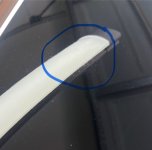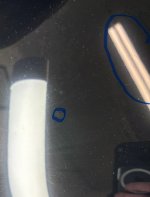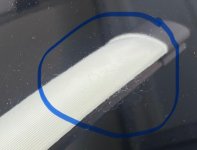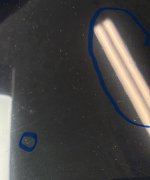Jacobpockros
New member
Several years back I was cleaning a plastic cover and didn’t let it dry. I left the cover on top of the car and trapped moisture created etching into the paint. I had a good paint correction done with a polisher years back, but now I’d like to go back and see if the rest of it can be improved. Could a light wet sanding make all of this less noticeable? I wouldn’t want to sand all the way down because it’s 30 year old original Single Stage paint. Very thin. I attached photos. The white marks inside the etching are light reflection. The etching appears to be black all the way through but I can’t tell for sure.




